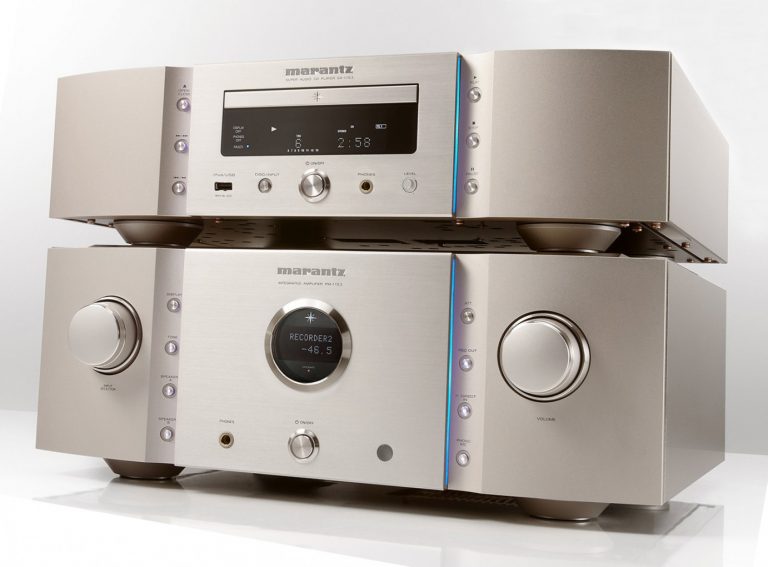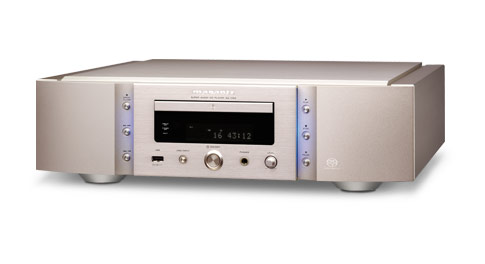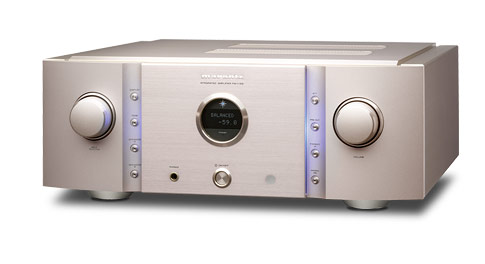On Marantz
In view of the long and thoroughly eventful company history, let’s start by briefly reviewing some important aspects before we take a closer look at the 11 Series: the company, founded by the hobby musician and music lover Saul B. Marantz, born in 1911 in New York goes all the way back to 1953. A year ealier, he had landed a small sales ramp with his first small series of his first pre-amplifier ‘Audio Consolette’, developed for personal use, and was confronted with the necessity of expanding his production due to the continuing high demand. The model 1 resulting from this development became the starting point of a success story which continued without any special incidents up to the 1960s. In 1964, for example, Superscope, which in turn co-operated with Sony, finally came to the sale due to economic difficulties. This connection to Japan, which had been entered into at that time, can scarcely be exaggerated for two reasons. Marantz is, on the other hand, a Japanese company, not least because, in the course of the 1960s and 1970s, the production of components developed in the US was increasingly shifted to Japan. On the other hand, Ken Ishiwata, the second key personality of the company, would hardly be so closely associated with the name of Marantz today. To this day, the influential engineer Ishiwata is working closely with Marantz’s development department and even has his own “KI Pearls” signature Series. In the 1980s, the Dutch Philips Group took the helm, but it should be in the year 2000 before Marantz again acted as a completely uniform – now Japanese – company and finally in 2001 under the umbrella of D & M Holding With Denon.
The Marantz 11 Series
With some background knowledge, we are now approaching the 11 Series, which is already a long tradition. For the first time in 2004, the CD/SACD/digital player SA-11S3 and the integrated-amplifier, the PM-11S3, the PM-11S3 – the term suggests it – is now available in the third version, new in the current model generation of network players NA-11S1. Before turning to the individual characteristics of the devices, we should first mention a few basic aspects that affect all three components of the 11 series.
Apart from the Marantz-typical housing design, which emphasizes the interconnectivity of the three devices on the optical level and, moreover, the manufacturing technology is beyond any doubt, three main points are the following: First, the interior of the chassis and the rear with the connections were largely extended coated with a copper coating (98% purity) which, on the one hand, ensures optimum conductivity and, on the other hand, protects sensitive components from electromagnetic interference. In addition, all three devices can also be connected via balanced inputs or outputs in XLR format. Last but not least, tried and tested developments such as the HDAM and HDAM SA2 (or SA3) modules are used. These are discretely constructed amplifier stages, which are used because of their superior characteristics instead of conventional operational amplifiers or special buffer stages in front of the output sockets. In summary, the 11 series continues the classic Marantz technologies in an optimized form and thus creates the best conditions for three extraordinary HiFi components.
Marantz SA-11S3
The Marantz SA-11S3 is primarily a CD and SACD player, which has also been supplemented by limited streaming capabilities. This “limitation” does not refer to the supported file formats or the quality of the playback – all relevant formats (PCM up to a maximum of 192 kHz/24 Bit, DSD to DSD256) are accepted and displayed in absolutely perfect quality the feed options. The input of music files is only possible via USB (front, type A: WAV up to 48 kHz, back, type B: maximum restrictions, see above) or via the Coax or TOSLINK interface. In a network, the SA-11S3 can not be integrated and a Bluetooth module has not been installed. If these restrictions do not interfere with their own usage habits, however, the use of the SA-11S3 as a digital player is nothing to prevent. The quality of the converted signal is undoubtedly first class and can be adapted even subtly to the material or personal taste thanks to two filter options. All users who continue to access physical disks will also appreciate the extremely solid aluminum die-cast drive. This is produced according to the wishes of the developer team around Ken Ishiwata as a special production and promises a permanently wear-free use.
Marantz NA-11S1
Let’s take a look at the network player of the 11 Series, which basically covers the area that is spared on the Marantz SA-11S3. This means, in the first line, the integration into the domestic network, which in the case of the NA-11S1, however, is exclusively provided via Ethernet interface. This allows various Internet-accessible radios can be received and the well-known streaming provider Spotify is supported. In addition, the Marantz NA-11S1 communicates with the proprietary Apple AirPlay protocol as well as the more open DLNA standard (compatibility), which allows the streaming of own music libraries from local music servers, network-attached storage (NAS) systems, . Furthermore, the digital interfaces already mentioned above (USB Type A & Type B, Coaxial and TOSLINK) are also available. The high-quality converter architecture also corresponds to the technology installed in the SA-11S3. The remote control is carried out by means of the optically and haptically successful remote control and is supplemented by the freely available Marantz Remote App (iOS / Android).
Marantz PM-11S3
Finally, we want to take a closer look at the PM-11S3 intergrated amplifier and we will first devote ourselves to the connection panel. Here, on the one hand, the phono input is remarkable, so that vinyl lovers can get their money’s worth without any further pre-amplifiers. On the other hand, the small switch points right to the possibility of two PM-11S3 via F.C.B.S. (For Floating Control Bus System) in a bi-amping setup. In fact, thanks to F.C.B.S. Even up to four amplifiers. Also interesting is the Power Amp Direct function, which bypasses the entire preamplifier unit of the PM-11S3 at the push of a button. It is, for example, conceivable that the front stereo channels of a home theater setup should not be transferred to the integrated power amplifiers of the AV receiver. Instead, the output stages of a PM-11S3 should be set in place by the alternative operating mode. Apart from its core task, the Marantz full amplifier is also available for creative experiments. The fact that the PM-11S3 can be used for such purposes is not that much of a problem. With a proud 100 watts at 8 ohms, the power package presents music beyond genre boundaries with a completely relaxed sovereignty, a compellingly musical overall performance goes hand in hand Hand with the highest precision in the production of individual sound events.
Final Thoughts
We can really only repeat our statement: We are very pleased to have the Marantz components in our program and to be able to offer the typical Marantz sound with the Series 14, 11 and 10 in three different price categories. Absolutely worth a listen!








Hello
Marantz PM-11S3 available?
Hello,
unfortunately not at the moment. These are all the Marantz devices we have available: https://www.hifi-im-hinterhof.de/en/hifimanufacturer/marantz
All the best